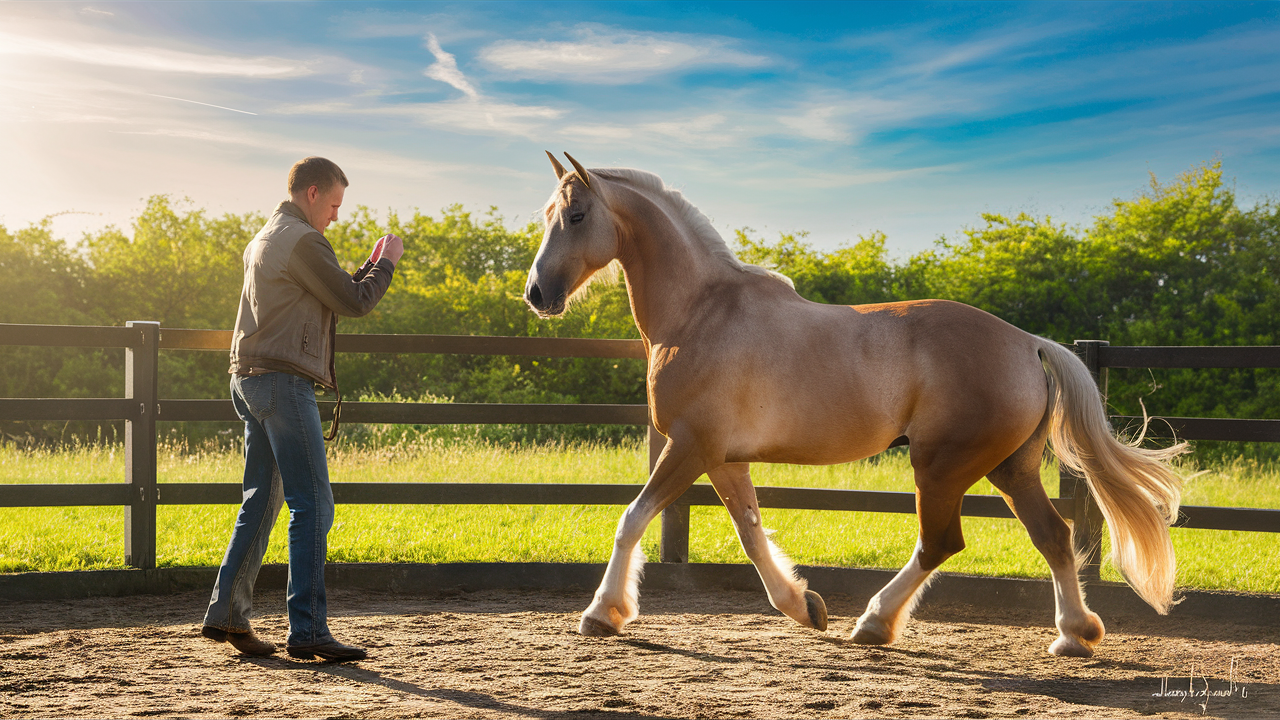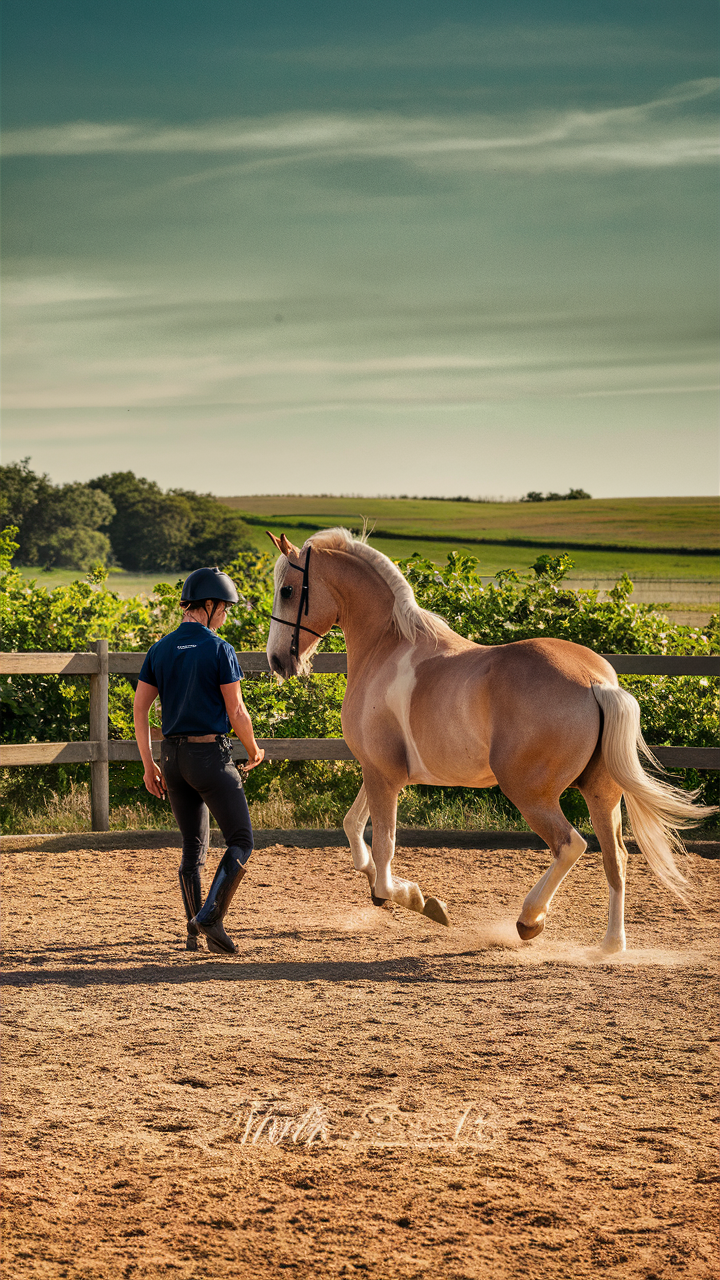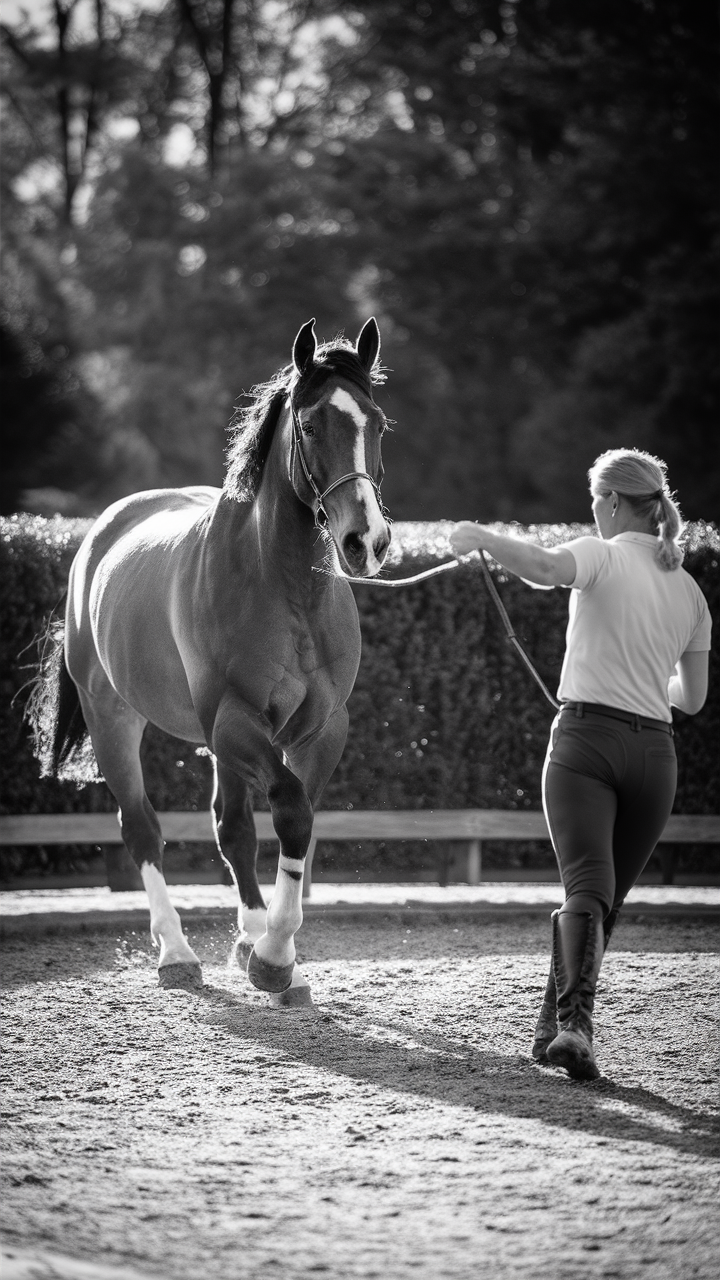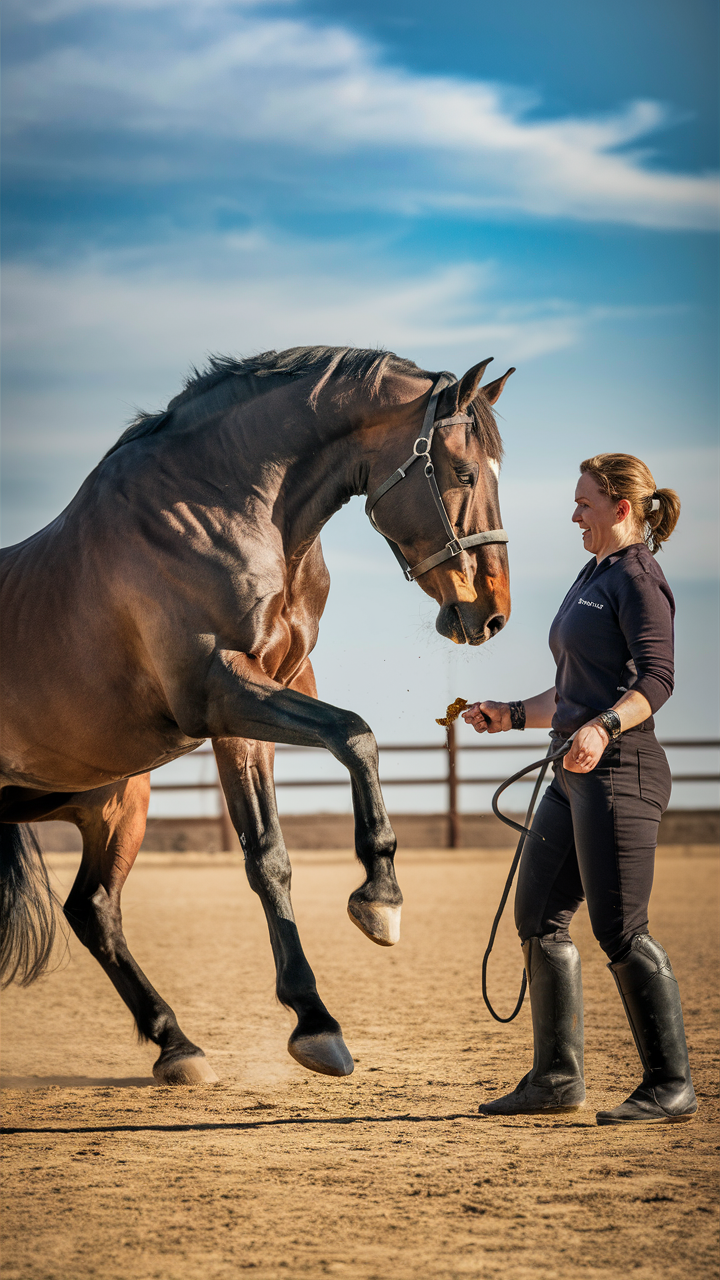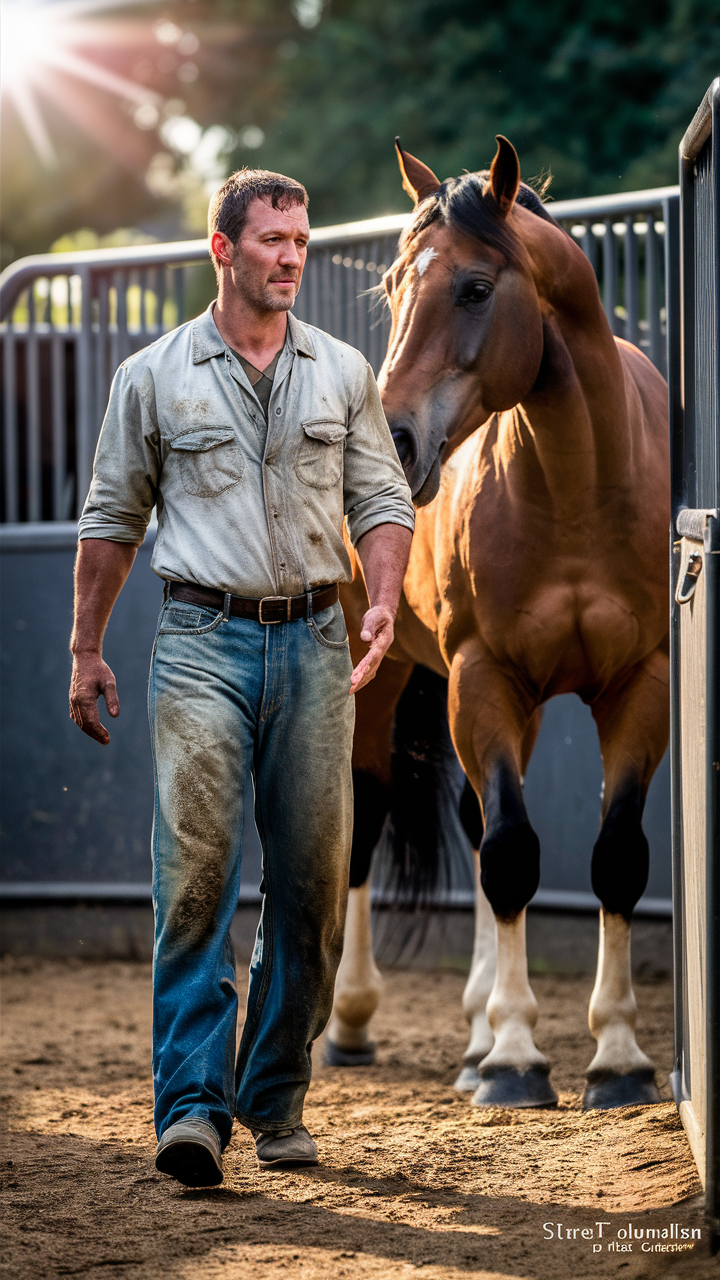Introduction
What is liberty horse training? Liberty horse training focuses on building a strong bond between the horse and the trainer through communication and mutual respect. This method involves working with horses at liberty, meaning the horse is free from tack such as halters and saddles. Trainers use body language and cues to guide the horse, emphasizing natural movement and behavior. Key exercises often involve groundwork to help the horse learn to respond to subtle cues without the need for a rein or lead rope.
Liberty training requires understanding how horses think and move. Trainers start by teaching the horse basic commands and gradually progress to more complex movements. This training method provides mental stimulation for the horse and improves overall horsemanship skills for the trainer. Many professional liberty horse trainers find that their horses become more responsive and willing to cooperate. With consistent practice, both the trainer and the horse can enjoy a harmonious working relationship.
Key Takeaways
- Liberty horse training builds a strong bond between horse and trainer through communication and mutual respect.
- This training method involves horses at liberty, free from tack such as halters and saddles, guided by body language and cues.
- Groundwork exercises are crucial for teaching the horse to respond to subtle cues without a rein or lead rope.
- Trainers start with basic commands and progress to more complex movements, improving horsemanship skills.
- Liberty training enhances trust and communication, providing mental stimulation for the horse and benefits for the trainer.
- Consistent practice leads to a harmonious working relationship between the trainer and the horse.
Understanding Liberty Horse Training
Liberty horse training focuses on building a strong bond between the rider and the pony through communication and mutual respect. This method involves dressage and working with horses at liberty, meaning the horse is free from tack such as halters and saddles. Trainers use body language and cues to guide the horse, emphasizing natural movement and behavior. They teach the horse to move sideways, walk to halt, and start working without the need for artificial aids, fostering freedom and trust.
The Basics of Liberty Horse Training
Liberty training requires understanding how horses think and move. Trainers start by teaching the horse basic commands and gradually progress to more complex movements. Groundwork exercises are crucial in this phase, helping the horse learn to respond to subtle cues without a rein or lead rope.
Benefits of Liberty Training for Horses and Trainers
Liberty training offers numerous benefits, including enhanced trust and communication between horse and human. It also provides mental stimulation for the horse and improves overall horsemanship skills for the trainer. Many professional liberty horse trainers find that their horses become more responsive and willing to cooperate.
Foundational Groundwork for Liberty Training
Groundwork is the foundation of effective liberty training. It involves exercises that teach the horse to walk, move the horse, and ensure they follow cues to move correctly. This phase sets the stage for more advanced techniques, ensuring that the horse understands the basics before progressing. Trainers start to work with horses working at liberty, using halter and lead to guide movements subtly, fostering a sense of freedom to move around without any tack. This liberty with your horse helps establish a robust training groundwork.
Establishing Basic Commands: Starting with fundamental commands is crucial. It’s about teaching your horse to understand and follow simple directives such as moving forward, stopping, and turning, which are essential before progressing to more complex tasks.
Enhancing Communication: Effective liberty training hinges on non-verbal communication. Utilizing body language, gestures, and voice tones helps in conveying messages clearly and understanding the horse’s responses, ensuring a smooth training process.
Developing Spatial Awareness: Teaching the horse to respect personal space and boundaries is fundamental. This involves exercises that encourage the horse to maintain a safe distance from the trainer, fostering a respectful and secure training environment.
Progressive Complexity: Once the basics are firmly established, gradually introduce more complex movements and commands. This methodical approach helps the horse adapt without feeling overwhelmed or confused, promoting confidence and trust in the training process.
These elements not only lay a strong foundation for liberty training but also enhance the bond and understanding between the horse and the trainer, making the transition to more advanced techniques smoother and more effective.
Essential Groundwork Exercises
Key groundwork exercises include teaching the horse to yield to pressure, move forwards and backwards, and respond to body language. These exercises are performed without a halter, allowing the horse to move freely and learn to respond to the trainer’s cues. Practicing in a round pen can help keep the horse focused and reduce distractions.
Developing Trust and Communication
Trust and communication are vital in liberty training. Trainers work with horses to build a strong connection, often using positive reinforcement. This approach helps the horse feel safe and confident, making training sessions more productive and enjoyable. By using verbal cues and a calming voice, trainers can ensure that the horse remains relaxed and willing to cooperate.
Advanced Liberty Training Techniques
Once the horse has mastered the basics, trainers can introduce more advanced techniques. These include horse from the ground, drive the horse, and use the rope techniques to enhance agility and responsiveness. Atkinson action horses are particularly noted for their ability to stop the horse, horse can move, and horse walks with precision. Advanced liberty training not only boosts the horse’s physical capabilities but also strengthens the bond between the experienced horse and the trainer, ensuring horse gets and horse might progress to loose canter and piaffe with ease.
Using Positive Reinforcement
Positive reinforcement is a key component of advanced liberty training. Trainers reward desired behaviors with treats or praise, encouraging the horse to repeat those behaviors. This method helps build a positive association with training sessions, making the horse more willing to engage in liberty work and perform tricks.
Performing Tricks and Movements
Trainers can teach horses to perform various tricks and movements, such as bowing or rearing. These exercises not only demonstrate the horse’s training but also provide mental stimulation and physical exercise. By incorporating tricks into liberty sessions, trainers can keep the horse engaged and motivated to learn new skills.
Positive reinforcement training allows horses to become active participants in their own learning. By focusing on rewards and building a positive relationship, we create an environment where horses are motivated, engaged, and excited to learn.”
Common Challenges and Solutions in Liberty Training
Liberty training can present several challenges, but with the right approach, these can be overcome. Understanding common issues and their solutions is essential for successful training. Trainers need to be aware of potential obstacles and have strategies in place to address them effectively. As many liberty horse trainers know, it’s vital to take the halter off and allow the horse to go at liberty. This method lets the horse move away from pressure freely and horse around in a small circle or paddock, building trust. Ben Atkinson, a proponent of natural horsemanship, suggests using a visual barrier and headcollar for beginners to safely start liberty training. Remember, the goal is to teach with the lightest cues and to always look to us for guidance.
Overcoming Training Obstacles
Common obstacles in liberty training include the horse’s reluctance to follow cues or fear of new situations. Trainers can overcome these challenges by being patient, consistent, and using positive reinforcement to build the horse’s confidence. By creating a positive learning environment, trainers can help the horse feel safe and willing to work at liberty.
Ensuring Safety During Liberty Training
Safety is paramount in liberty training. Trainers must ensure that the training environment is secure and free from hazards. They should also be aware of the horse’s behavior and body posture to prevent accidents and injuries. Consistently monitoring the horse and maintaining a calm, controlled setting helps ensure both the horse’s and the trainer’s safety.
[lasso rel=”amazon-20″ id=”5321″]
Conclusion
Understanding what is liberty horse training provides insight into building a strong bond between the horse and the trainer through communication and mutual respect. By working with horses at liberty, free from tack such as halters and saddles, trainers use body language and cues to guide the horse, emphasizing natural movement and behavior. This method includes groundwork exercises that teach the horse to respond to subtle cues without the need for a rein or lead rope.
Liberty training not only enhances trust and communication between horse and trainer but also offers mental stimulation for the horse and improves overall horsemanship skills. Many professional liberty horse trainers find that their horses become more responsive and willing to cooperate. With consistent practice, both the trainer and the horse can enjoy a harmonious working relationship, making liberty training a rewarding and effective approach in the equestrian world.

